In the intricate tapestry of avian behavior, one fascinating phenomenon stands out: mixed-species flocking. Rather than sticking exclusively with their own kind, many bird species frequently form diverse coalitions, traveling, foraging, and navigating their environments together in a remarkable display of interspecies cooperation. These feathered alliances aren’t random—they represent sophisticated survival strategies that have evolved over millennia. From the tropical rainforests to temperate woodlands, mixed-species flocks demonstrate how birds from different evolutionary lineages have discovered that sometimes, safety and success come through diversity rather than uniformity. This collaborative approach to survival offers fascinating insights into avian intelligence, social dynamics, and the complex ecological relationships that shape our natural world.
The Fundamental Advantages of Mixed Flocking
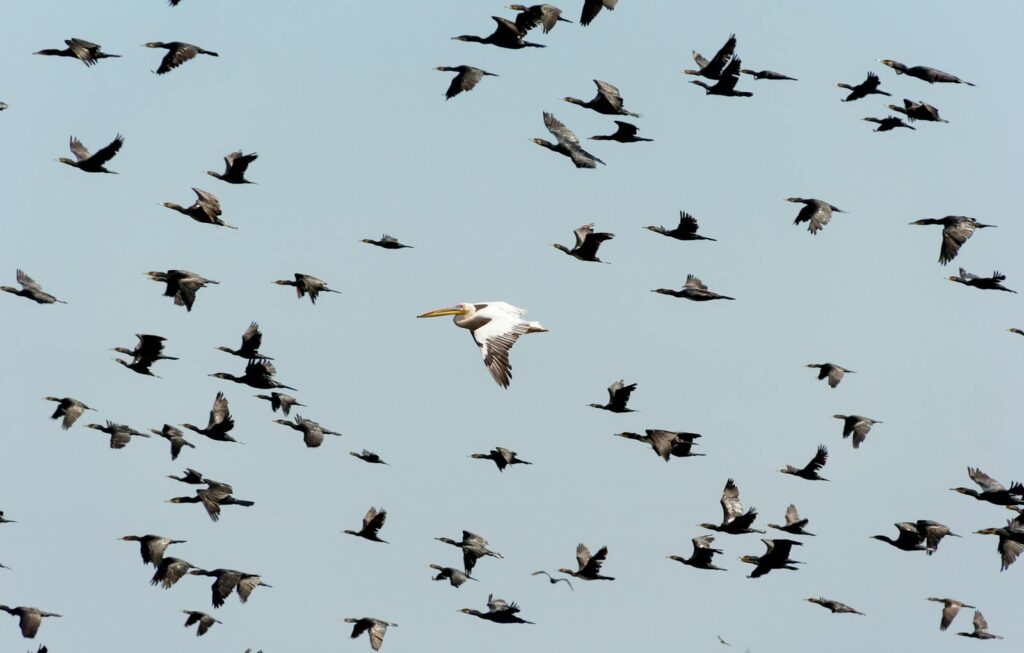
At its core, the formation of mixed-species flocks offers multiple survival advantages that benefit all participants. The most significant benefit is increased protection from predators—more eyes watching for danger means earlier detection of threats and a greater chance of escape. Additionally, mixed flocks often exhibit complementary foraging techniques, with different species specializing in particular feeding niches, which reduces competition while maximizing resource discovery. Research has shown that birds in mixed flocks spend less time on vigilance behaviors and more time feeding, resulting in greater foraging efficiency. These cooperative assemblages also facilitate information transfer about food resources, predator presence, and habitat quality across species boundaries, creating a network of shared intelligence that enhances survival for all members.
Predator Detection and the “Many Eyes” Hypothesis

The “many eyes” hypothesis remains one of the most well-supported explanations for mixed-species flocking behavior. This theory posits that as group size increases—regardless of species composition—the collective vigilance increases exponentially while the vigilance burden on each individual decreases. Studies in the Amazon rainforest have demonstrated that birds in mixed-species flocks detect approaching predators like hawks and falcons significantly earlier than solitary individuals, giving the entire group precious extra seconds to seek cover. Interestingly, certain species serve as “sentinel” species within these flocks, specializing in alarm calling and threat detection while benefiting from the company of other species with different vigilance patterns. This division of security labor creates a more comprehensive defensive system than any single species could maintain alone, turning diverse flocks into sophisticated early-warning networks.
Foraging Benefits and Resource Partitioning
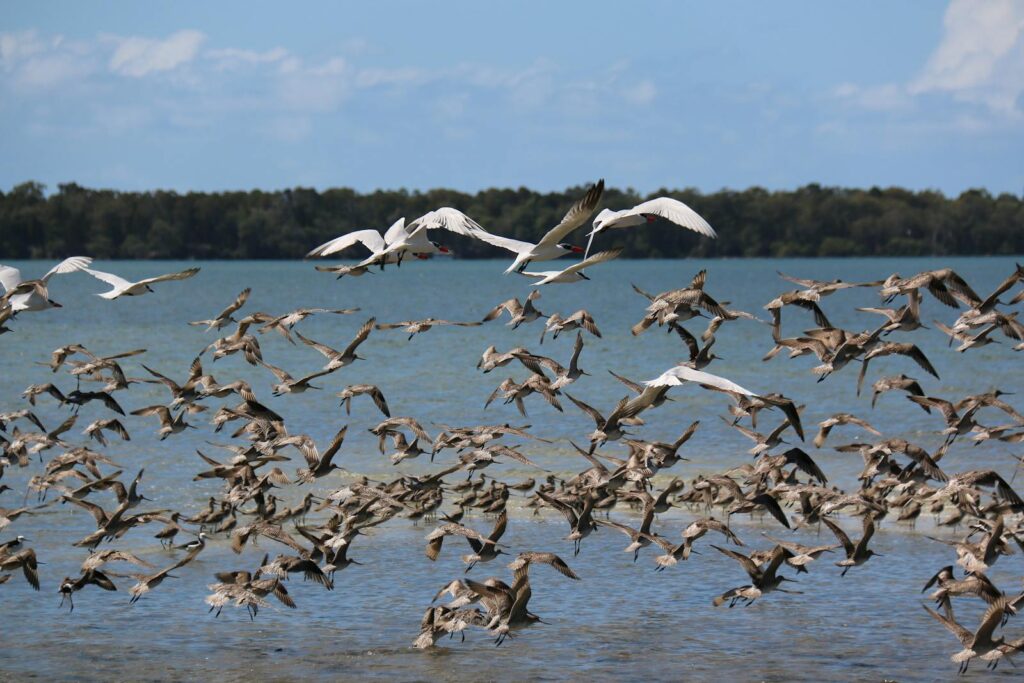
Mixed-species flocks excel at maximizing foraging efficiency through complementary feeding strategies and resource partitioning. For example, in North American winter flocks, chickadees and titmice might search outer branches while nuthatches and woodpeckers probe bark crevices, ensuring that food sources are thoroughly exploited without direct competition. Some species act as “beaters,” flushing insects and other prey while moving through vegetation, inadvertently creating feeding opportunities for companion species that follow them. Research in tropical forests has documented cases where certain species increase their feeding rates by up to 60% when participating in mixed flocks compared to foraging alone. This cooperative approach allows birds to access food resources that might otherwise remain undiscovered, particularly during seasons of scarcity when efficient foraging becomes critical for survival.
Nuclear Species: The Social Glue of Mixed Flocks
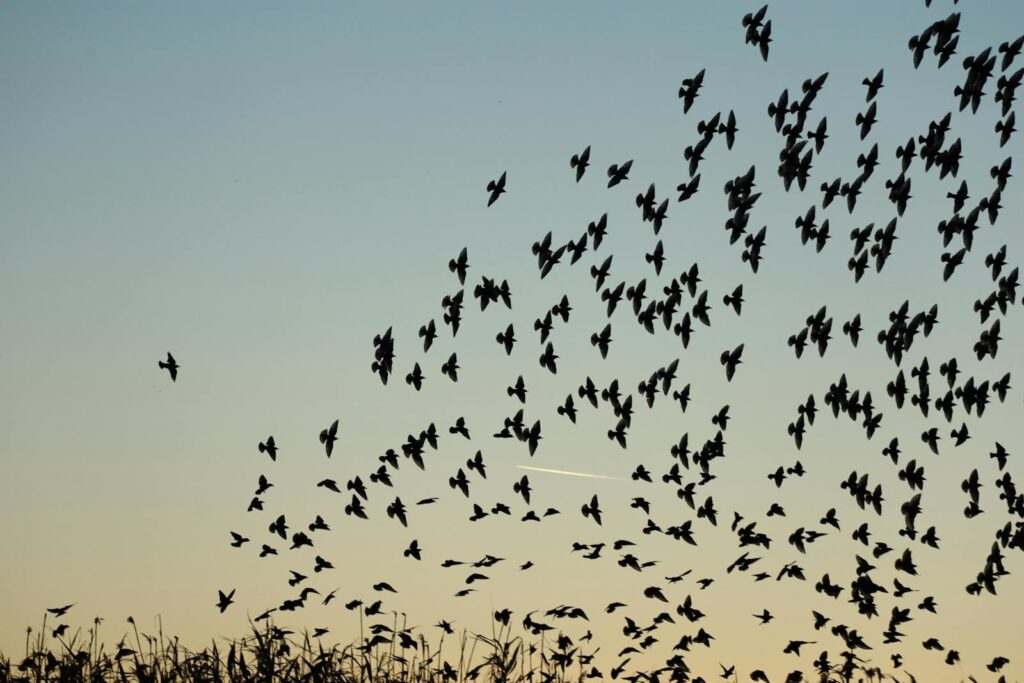
Within most mixed-species assemblages, certain bird species serve as “nuclear” or “core” species that form the social foundation around which the flock organizes. These nuclear species, such as chickadees in North America or white-fronted falconets in Southeast Asian flocks, typically vocalize frequently, maintain consistent movement patterns, and exhibit strong social cohesion. They effectively act as the flock’s social hubs, with their presence and behavior determining flock formation, maintenance, and movement. Ornithologists have conducted removal experiments demonstrating that when nuclear species are absent, mixed flocks often disintegrate or fail to form entirely. The consistent personalities and predictable behaviors of these social keystones create stability that allows diverse species to coordinate their movements and activities without shared language or evolutionary history, enabling the remarkable cohesion observed in these multispecies communities.
Information Sharing Across Species Boundaries

One of the most sophisticated aspects of mixed-species flocking involves the transmission of information across species boundaries through a complex system of calls, movements, and behavioral cues. Birds learn to recognize and respond to the alarm calls of other species, effectively creating a multi-lingual warning system that transcends evolutionary divides. Field experiments have revealed that many birds can distinguish between different types of alarm calls from companion species, responding appropriately to calls indicating aerial predators versus ground threats. Beyond predator warnings, birds in mixed flocks share information about food resources, with studies showing that species will rapidly investigate areas where companion species display feeding behaviors. This cross-species communication network creates a collective intelligence that enhances survival outcomes for all participants, demonstrating how selection pressures have favored the ability to decode and utilize information from evolutionary distant species.
Seasonal Variations in Mixed-Species Flocking

The composition, frequency, and behavior of mixed-species flocks show remarkable seasonal variations across different ecosystems. In temperate regions, mixed flocking behavior typically intensifies during fall and winter months when breeding territories dissolve, food becomes scarcer, and predation risks increase. During these challenging periods, even typically solitary species may join mixed flocks for safety and foraging advantages. Conversely, in tropical regions where seasonality affects precipitation rather than temperature, mixed-species flocks often remain relatively stable year-round but may alter their movement patterns and composition during wet versus dry seasons. Research in the Andes has documented how flocks track resources vertically across elevation gradients as seasonal conditions shift. These seasonal dynamics highlight how mixed flocking represents a flexible adaptive strategy that birds can amplify or diminish according to environmental conditions and changing survival pressures.
Geographic Patterns of Mixed-Species Flocking

Mixed-species flocking behavior varies dramatically across biogeographic regions, with the most complex and diverse assemblages typically occurring in tropical forests. Amazonian mixed flocks can contain over 60 different species moving together through the forest, while temperate region flocks rarely exceed 10-12 species. Research comparing flocking patterns across continents has revealed that tropical flocks tend to be more cohesive, stable, and structured than their temperate counterparts, with clearer nuclear-satellite species relationships. Island ecosystems generally host simpler flocking arrangements with fewer participating species but often stronger interdependence among those present. These geographic patterns reflect regional differences in predation pressure, resource distribution, habitat complexity, and evolutionary history. The most complex flocking systems have evolved in environments with high predation pressure and structurally complex habitats where coordinated group vigilance offers maximum survival advantages.
Species-Specific Roles Within Mixed Flocks

Within the dynamic social structure of mixed-species flocks, different birds often adopt specialized roles that contribute to the collective functioning of the group. Sallying species like flycatchers position themselves at flock peripheries, darting out to catch insects flushed by the movement of other birds. Certain species serve as “sentinel” specialists, remaining in elevated positions and maintaining high vigilance while benefiting from food discoveries made by companion species. Some species function as “beating” specialists, actively disturbing foliage and debris to flush prey that other flock members then capture. Interestingly, research has found that many species behave differently when participating in mixed flocks versus when foraging alone or with conspecifics, adopting flock-specific behaviors that maximize the benefits of the interspecies association. These specialized roles create a form of ecological community that operates through complementary niches rather than competitive exclusion.
The Cost-Benefit Analysis of Joining Mixed Flocks
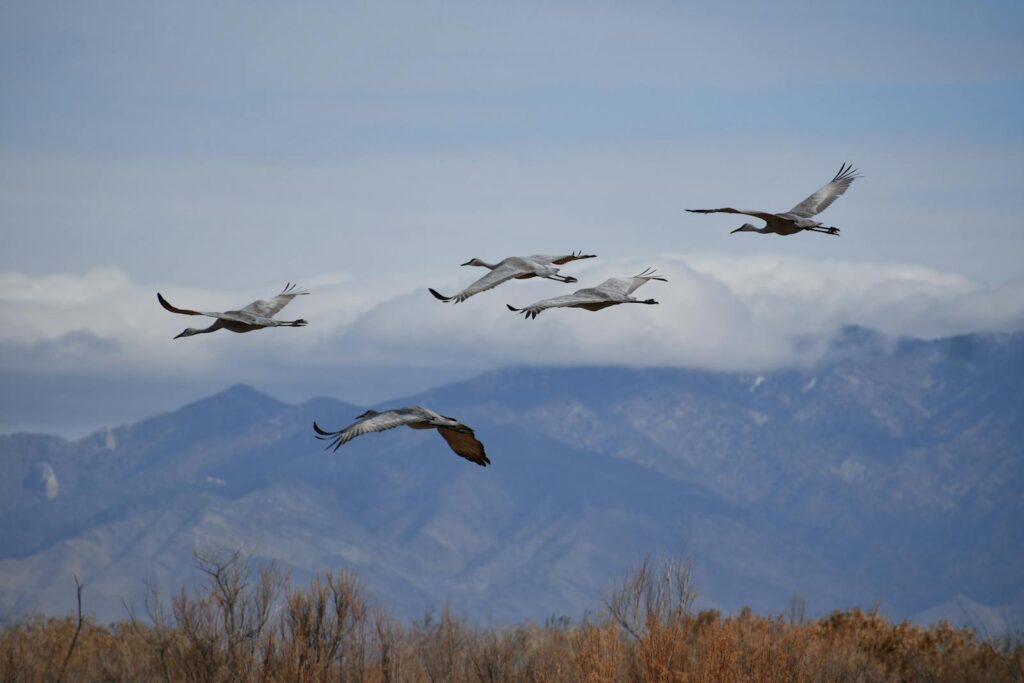
While mixed-species flocking offers numerous benefits, birds must constantly perform a sophisticated cost-benefit analysis when deciding whether to join, remain with, or leave a mixed flock. Potential costs include increased competition for resources, greater visibility to certain predators, constraints on preferred movement patterns, and exposure to novel parasites or diseases carried by other species. For some specialists, participating in fast-moving flocks may force them to forage less thoroughly than they would alone. Ornithologists studying decision-making in flocking birds have documented how individuals frequently make rapid assessments based on flock composition, resource availability, perceived predation risk, and time of day. These decisions are so finely calibrated that the same individual may join mixed flocks in the morning when predation risk is high but forage independently in the afternoon when feeding efficiency becomes the priority, demonstrating the cognitive sophistication underlying this seemingly simple social behavior.
How Heterospecific Recognition Develops

The ability of birds to recognize, trust, and coordinate with entirely different species represents a remarkable cognitive achievement that scientists are still working to understand fully. Some aspects of heterospecific recognition appear to be innate, with young birds showing inborn tendencies to respond to certain alarm calls or join specific companion species. However, research increasingly suggests that much of this cross-species social intelligence develops through experience and learning. Juvenile birds observe adults responding to heterospecific signals and gradually incorporate these associations into their own behavioral repertoires. Controlled experiments have demonstrated that naive birds can learn to recognize and respond appropriately to the alarm calls of unfamiliar species after just a few paired exposures with actual threats. This impressive learning capacity allows birds to continually update their “social database” of reliable companion species and develop the sophisticated heterospecific recognition skills necessary for successful participation in mixed-species communities.
Mixed Flocking and Conservation Implications
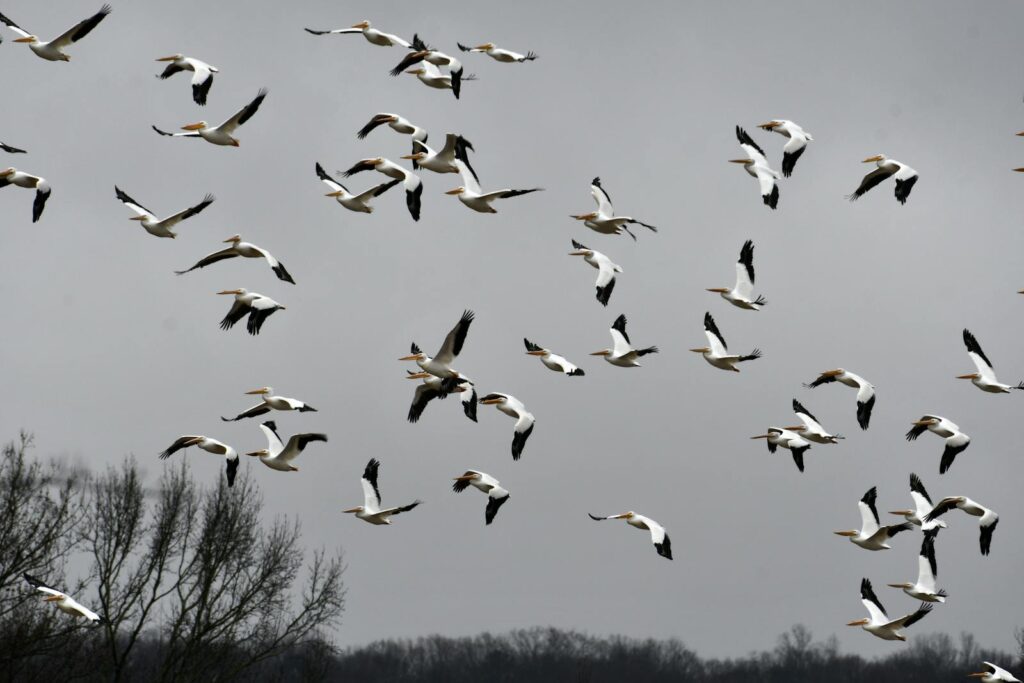
The phenomenon of mixed-species flocking carries significant implications for bird conservation efforts worldwide. Habitat fragmentation particularly threatens mixed-flock dynamics, as many flocks require large, continuous areas to maintain their complex social structures and movement patterns. When nuclear species decline or disappear due to habitat loss or other threats, entire mixed-flock systems can collapse, affecting numerous dependent species simultaneously. Conservation biologists are increasingly incorporating mixed-species flocking data into protected area design, recognizing that preserving these social networks requires understanding both habitat requirements and interspecies relationships. Research in fragmented forests has demonstrated that mixed-species flocking behavior often breaks down in small forest patches, even when suitable habitat remains, suggesting that these social systems have minimum area requirements beyond the needs of individual species. This network perspective represents an important shift from single-species conservation toward protecting ecological processes and interspecies relationships.
Evolutionary Origins of Mixed-Species Flocking

The evolutionary pathways that led to mixed-species flocking behavior likely began millions of years ago with simple cases of mutual tolerance between species exploiting similar resources. Over evolutionary time, species that gained advantages from associating with others would have experienced selection pressure favoring traits that enhanced these associations, such as the ability to recognize heterospecific alarm calls or coordinate movements with other species. Comparative studies across bird lineages suggest that mixed flocking has evolved independently multiple times, with different mechanisms and species compositions emerging in separate evolutionary lines. The most complex flocking systems likely evolved in environments where predation pressure was intense and consistent over evolutionary time, creating strong selection for cooperative vigilance strategies. Fascinatingly, phylogenetic analyses indicate that some species have evolved specific adaptations for mixed-species participation, including specialized vocalizations used only in mixed-flock contexts and behavioral traits that facilitate interspecies coordination.
Future Research Directions in Mixed-Species Flocking
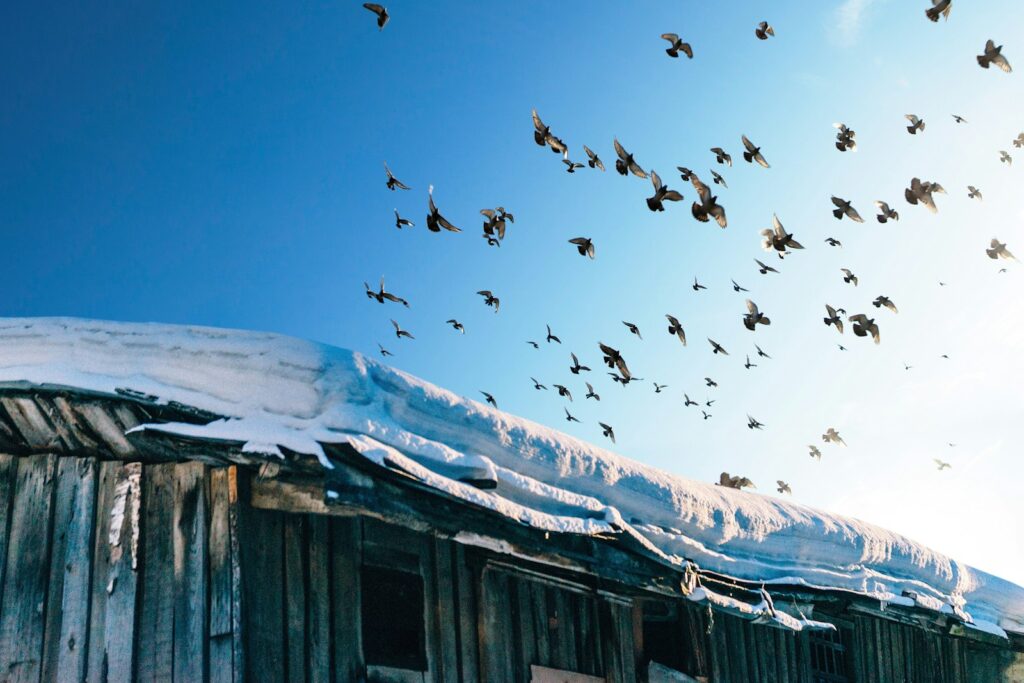
As technology advances, researchers are gaining unprecedented insights into the complex dynamics of mixed-species bird flocks. Miniaturized GPS trackers now allow scientists to monitor individual movements within flocks over extended periods, revealing previously hidden patterns of leadership, decision-making, and social influence across species boundaries. Acoustic analysis software enables researchers to decode the complex vocal communications that coordinate these interspecies alliances, identifying subtle variations in calls that may convey specific information about predator types, food availability, or movement intentions. Future research will likely focus on understanding how climate change affects mixed-flock dynamics, as shifting seasonal patterns and changing species distributions disrupt established flocking relationships. Additionally, cognitive research examining how birds develop and maintain mental models of heterospecific companions promises to reveal new dimensions of avian intelligence. These advancing frontiers of mixed-flock research continue to demonstrate that these interspecies assemblages represent some of the most sophisticated social systems in the animal kingdom, challenging our understanding of cooperation, communication, and cognition.
Mixed-species bird flocks represent one of nature’s most remarkable examples of cooperation across species boundaries. These diverse avian alliances have evolved sophisticated systems of communication, coordination, and complementary specialization that enhance survival for all participants. From the intricate tropical flocks of the Amazon to the winter feeding parties of northern forests, mixed-species associations demonstrate that in the natural world, diversity often provides advantages that uniformity cannot match. As we continue to study these fascinating interspecies networks, they offer profound insights into the evolution of cooperation, the cognitive capacities of birds, and the complex ecological relationships that sustain biodiversity. Understanding mixed-species flocking not only enriches our appreciation of avian behavior but also highlights the importance of preserving the intact ecosystems where these sophisticated social systems can continue to flourish.
